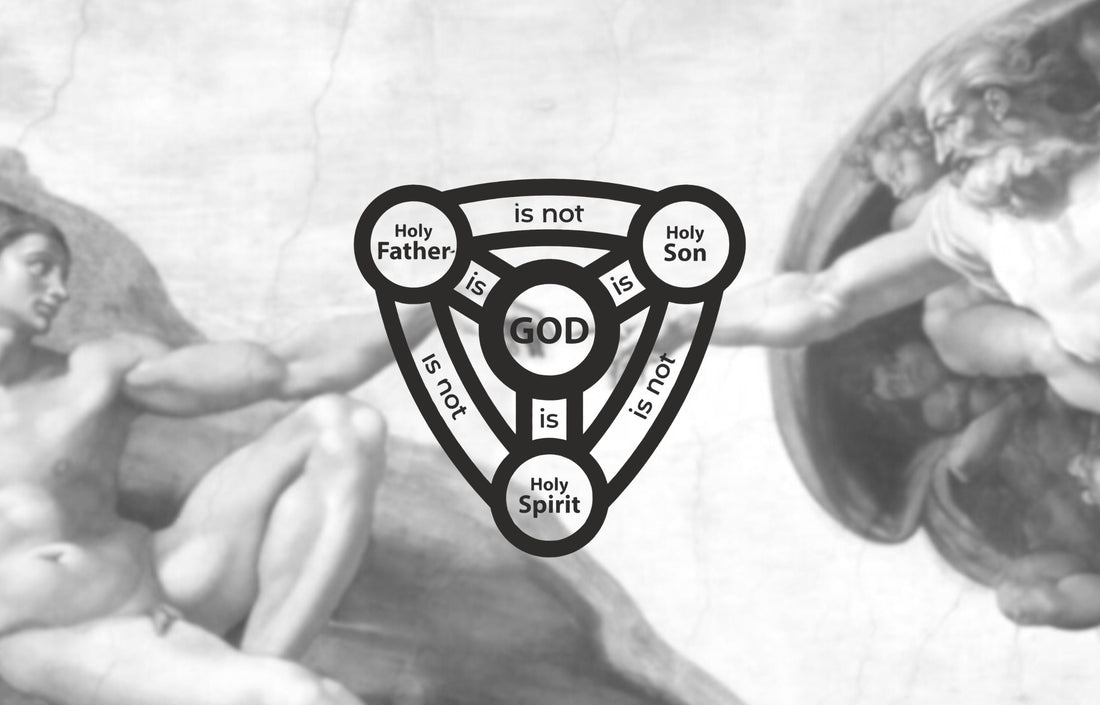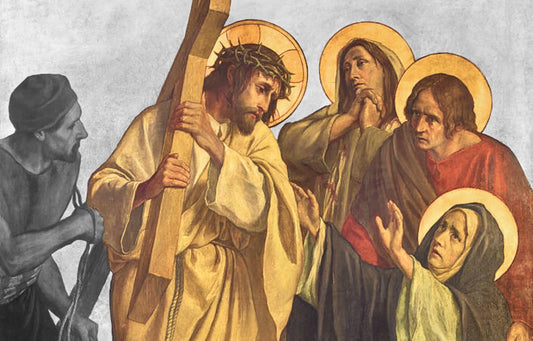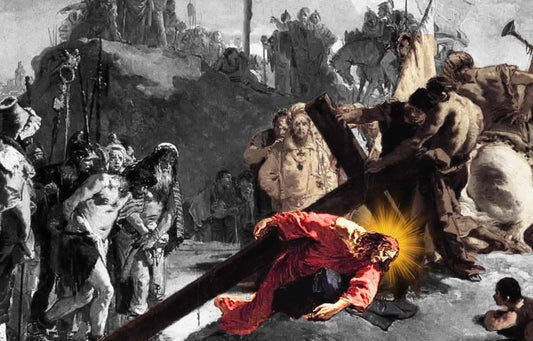The Shield of the Trinity (Scutum Fidei) is a 12th-century theological diagram that visually encapsulates the doctrine of the Trinity: one divine essence in three distinct, co-eternal Persons—Father, Son, and Holy Spirit. Emerging during a period when the Church actively combatted heresies through visual catechesis, its triangular design employs stark Latin inscriptions to delineate both the unity and distinctions within the Godhead:

- Pater non est Filius ("The Father is not the Son")
- Filius non est Spiritus Sanctus ("The Son is not the Holy Spirit")
- Spiritus Sanctus non est Pater ("The Holy Spirit is not the Father")
Each Person connects to the central Deus (God) via the term est ("is"), affirming their full divinity while maintaining their hypostatic distinctions. This elegant synthesis of geometry and theology became a hallmark of Western Christian instruction, appearing in Dominican teaching manuals, illuminated manuscripts like the Compendium Historiae (1208–1216), and later in stained glass at Westminster Abbey.
Anatomy of the Trinity Diagram

The Shield’s structure operates on two theological axes:
Vertical (Divine Identity)
- Pater est Deus ("The Father is God")
- Filius est Deus ("The Son is God")
- Spiritus Sanctus est Deus ("The Holy Spirit is God")
Horizontal (Personal Distinction)
The non est linkages guard against conflating the Persons, echoing the Athanasian Creed’s insistence that the Trinity is "neither confusing the Persons nor dividing the Substance."
Medieval Enhancements
Some 13th-century manuscripts reinforced this logic by inscribing est/non est bidirectionally—a precursor to modern diagrams using double-headed arrows (↔). This yielded twelve categorical statements systematizing Trinitarian orthodoxy:
- Affirmations of Divine Essence:"God is the Father," "God is the Son," etc.
- Negations of Personal Identity:"The Son is not the Holy Spirit," etc.
Historical Development and Purpose

The Shield likely originated in 12th-century Europe, a period when the Church increasingly used visual aids to combat heresy and teach doctrine. Key milestones include:
- Early Appearance: A 1208–1216 manuscript of Peter of Poitiers’ Compendium Historiae, where it accompanied genealogies of Christ.
- Popularization: Dominican friar William Peraldus included it in his Summa Vitiorum (c. 1250), linking it to moral instruction.
- Artistic Legacy: By the 15th century, it appeared in stained glass (e.g., Westminster Abbey), catechisms, and even church carvings, particularly in England’s East Anglia region.
"The Shield’s spread across Europe underscores its utility—it was theology for the eyes, not just the mind."— Trinity in the Middle Ages, Journal of Ecclesiastical History
Theological Significance

At its heart, the Shield serves as a visual representation of the Athanasian Creed, articulating the co-equality and co-eternity of the three persons of the Godhead. It reinforces non-contradictory Trinitarian doctrine, emphasizing:
1. Unity of Essence
All three persons are fully God, not parts of God. This affirms monotheism.
2. Distinction of Persons
The Father is not the Son, and the Son is not the Spirit. Each has a distinct role.
3. Co-equality and Co-eternity
No one person is “above” the others. They are equal in power, glory, and eternal existence.This visual theology reinforces the Nicene Creed (AD 325).
Visual Theology: Geometry as Doctrine

The Shield’s design is rich with intentional symbolism:
- The Triangle: Represents divine perfection, echoing the Trinity’s unity and equality. Its unbroken shape rejects hierarchical or fragmented views of God.
- Central "Deus": Emphasizes monotheism—the three Persons share one essence (homoousios), refuting tri-theism.
- Bidirectional Links: The double-edged "est/non est" logic mirrors the reciprocity of the Athanasian Creed: "The Father is God, the Son is God, the Holy Spirit is God—yet they are not three Gods but one."
Medieval theologians saw the diagram as a visual expression of perichoresis (the mutual indwelling of the Trinity), where the lines between Persons suggest eternal relationship without confusion.
Trinitarian Shield vs. Heresies

The trinitarian Shield functioned as "defensive theology"—in an era of limited literacy and rampant theological speculation, the diagram provided unambiguous refutations of three major heresies:
1. Modalism (Sabellianism)
Claim: God appears in three roles, not Persons.
Shield’s Reply: Non est links (e.g., Pater non est Filius) affirm that the Father, Son, and Spirit are distinct, coexisting Persons—not shifting modes.
2. Arianism
Claim: The Son and Spirit are created, lesser beings.
Shield’s Reply: Est links (e.g., Filius est Deus) declare full divinity. All three share the same eternal essence—no hierarchy.
3. Tritheism
Claim: The Trinity is three separate gods.
Shield’s Reply: The central Deus unites the three Persons as one God, echoing the Athanasian Creed: "Not three Gods, but one God."
A 1450 stained glass iteration at Long Melford Church visually paired the Shield with the Athanasian Creed’s "Unus non tres" ("One God, not three")—a deliberate anti-tritheistic proclamation.
By using both logic and symbolism, the Shield of the Trinity guards the faith as both a teaching tool and an apologetic weapon.
Enduring Legacy

Far from a medieval curiosity, the Shield’s methodology persists in modern systematic theology. Karl Barth’s Church Dogmatics mirrors its bidirectional logic when distinguishing the Trinity’s "threefold repetition" of singular divine subjectivity. Meanwhile, contemporary apologists like Tim Staples employ its visual immediacy to explain why Trinitarianism differs from polytheism.
Conclusion
The Shield transcends its era precisely because it marries doctrinal precision with pedagogical accessibility—a rare fusion that continues to model how the Church might articulate ineffable truths. As both artifact and active theology, it reminds us that orthodoxy’s defense often requires not just words, but forms.














